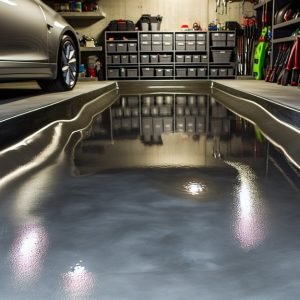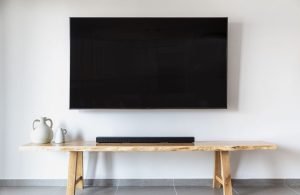Last Updated on January 28, 2025 by teamobn
As households expand and evolve, so do their needs. Forward-thinking is not solely about incorporating the latest technology but designing a versatile living space that can adapt duly. This might mean having modular kitchens that are easy to update or flexible rooms that change with your requirements. Taking a proactive approach further ensures that your home stays well-suited for every phase of life.
Contents
Grasping the Concept of Future-Proofing
Timeless improvements are features that can adjust to technological advancements and evolving daily requirements. A forward-thinking approach not only emphasizes flexibility and sustainability but enables the house to adapt without significant renovations. The best part is that property owners can easily create spaces that grow with family dynamics by including adjustable layouts and smart gadgets.
Major Advantages of Flexible Home Solutions
Properties designed for adaptability generally enjoy greater longevity. They can also swiftly respond to market trends, enhancing their appeal to prospective buyers.
Seamless transformations, like converting a home office into a guest room, further reduce stress and renovation costs. These houses also encourage sustainable living by decreasing reliance on resource-heavy modifications.
Understanding Family Dynamics and Living Requirements

At the outset, a couple may seek a simple and comfortable space. However, with children comes the demand for more bedrooms and a safer environment. As kids grow older, their desire for personal space increases. This prompts even further adjustments to living areas. Eventually, as parents age, priorities might turn toward downsizing or modifying the house to enhance mobility and accessibility or even zoning off a separate area as a ‘granny flat’.
Designing Adaptable Spaces
This step requires careful planning to anticipate evolving usage and functionality. By integrating retractable walls and versatile rooms, any space can be tailored to meet the daily needs of an expanding family. For instance, an open-plan layout can seamlessly transition from a children’s play area during daylight hours to a peaceful adult lounge in the evening.
Convertible interior elements and movable partitions can further revolutionize this approach. This may include an extendable dining table for meals or pull-out seats for homeschooling. Portable screens can also quickly help segment or expand areas on demand. This not only boosts privacy but also optimizes available area. It rapidly reduces the necessity for expensive renovations.
Smart Home Technology
Modern gadgets enhance convenience, security, and energy efficiency. These systems also offer a variety of functions. This includes automated lighting, climate control, surveillance, and voice-enabled devices. The best part is that the newest technology also has the capability to manage and monitor household environments remotely. This increases comfort and contributes to substantial electricity savings.
As families expand and their needs shift, intelligent solutions can be a great addition. Owners can start with smart alarms or HVAC controls but can later incorporate programmable locks and indoor cameras. For elderly relatives, this technology can be customized with health monitoring and emergency response capabilities.
Integrating Renewable Energy Sources
Solar panels can significantly lower electricity expenses and carbon emissions. They have become a favored option among conscious homeowners. Additionally, geothermal heating/cooling systems utilize the earth’s constant temperatures to boost efficiency. Integrating these helps make properties more self-sufficient. It also actively supports broader conservation efforts.
Construction materials like bamboo flooring, steel, and low-VOC paints are gaining popularity. This is due to their minimal footprint and exceptional durability. These mediums also typically originate from renewable sources. This quickly decreases waste and energy use linked with production processes. By selecting these options, homeowners can ensure their renovations are long-lasting and future-ready.
Safety and Accessibility
Creating an environment that caters to all age groups is essential. Child-proofing measures might involve securing cabinets and drawers, installing safety gates at staircases, and adequately covering electrical outlets. Similarly, elder-friendly designs may include integrating grab bars in bathrooms, using slip-resistant flooring materials, and adjusting counter heights for easier access. Incorporating these features not only boosts safety but also promotes independence for all members.
Additionally, lever-style door handles and touch-activated faucets may be beneficial for individuals with limited dexterity. Proactively planning these modifications can be cost-effective and minimally disruptive. This also ensures that the living space remains comfortable and functional for all residents regardless of their challenges.
Roofing and Exterior Adaptations
These are essential for maintaining and safeguarding a home’s durability. Utilizing premium materials like metal or slate can prolong lifespan and resilience against weather conditions. Professional roof installations can also actively prevent water damage, boost insulation efficiency, and support structural soundness. Advanced technologies like cool or green coverings can further contribute to energy efficiency and sustainability.
In addition, a home’s livability and functionality can be greatly enhanced by creating expandable outdoor spaces. Features like retractable awnings, foldable glass walls, and convertible pergolas enable different uses. These modifications transform a basic patio or deck into a space with weather protection. Whether used for hosting gatherings, expanding living areas, or offering a serene outdoor retreat, these adaptable designs quickly optimize the potential of a simple property.
Cost Considerations and Budgeting
Homeowners must account for upfront expenses and potential long-term savings while setting a budget for upgrades. Focusing on projects delivering the highest return on investment is essential. Considering options like improvement grants or government incentives for energy-efficient upgrades is also a good idea. By creating detailed budgets, individuals can allocate funds efficiently, avoid overruns, and complete crucial constructions without added burden.
Upgraded kitchens, modern systems, and versatile living spaces can also easily draw in potential buyers and justify higher asking prices. Additionally, smart home technologies offer significant reductions on utility bills. This can further enhance the property’s appeal. Overall, a proactive and planned approach results in major profitability over time.
Endnote
Preparing your property for the future involves more than simply adjusting to current trends. It requires looking ahead and planning attentively. By making careful design decisions, integrating technology, and adopting sustainable practices, owners can ensure their spaces stay functional. This can also boost comfort and appeal over time.
Although initial expenses may be intimidating, the long-term advantages include longer-term savings, increased property value, and improved quality of life. However, it is important to plan upgrades considering what meets your family’s needs now and what will benefit you in the years to come. This will guarantee no penny goes to waste.






